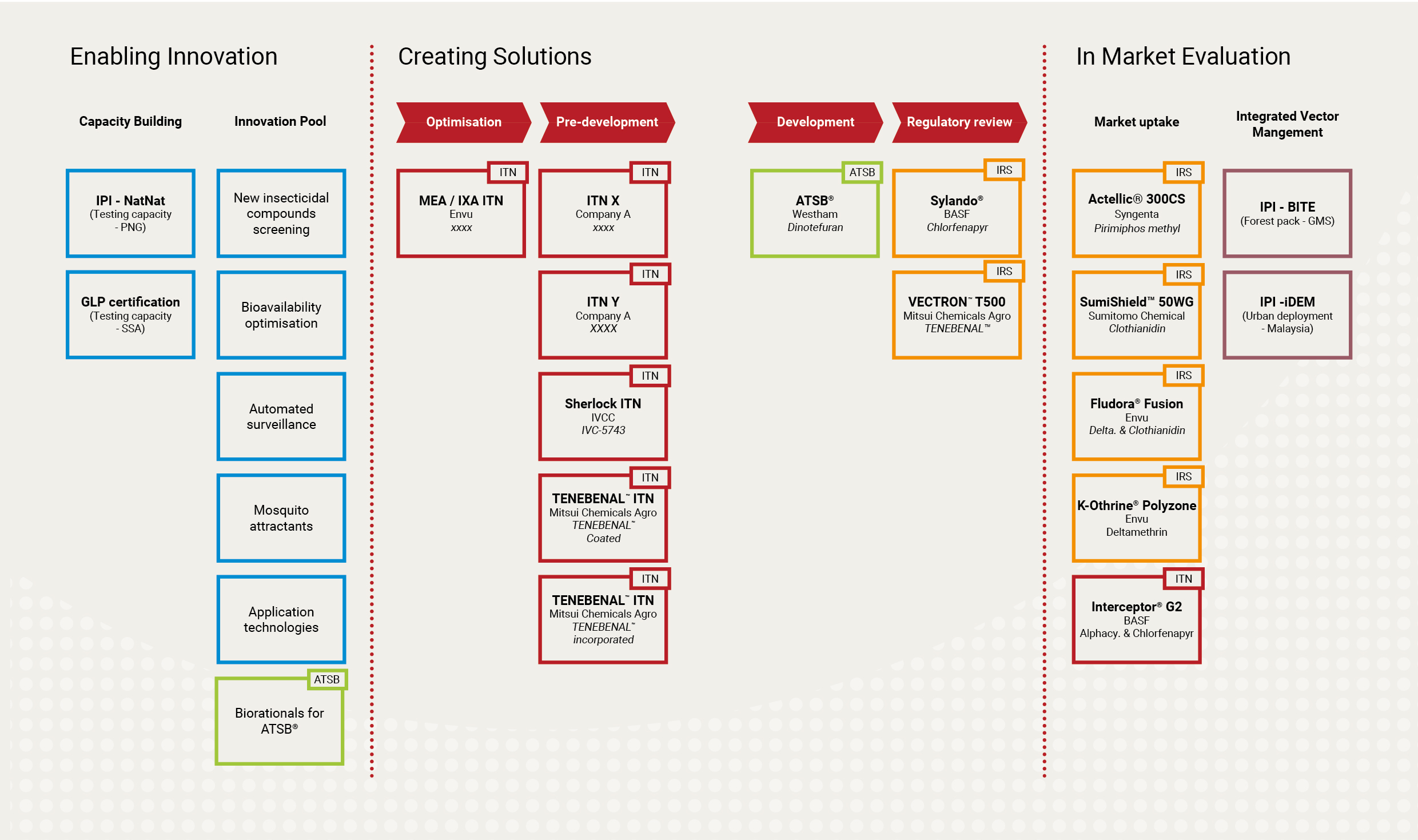For a long time, vector control strategies have included the use of Long Lasting Insecticidal Nets (LLIN) and Indoor Residual Spraying (IRS). Although current tools are still effective in reducing malaria mortality rates, an increase in insecticide resistance to the four insecticide classes used in vector control tools, means there is a need to identify and develop new insecticides for public health purposes. New insecticides will be utilised in the development of effective vector control tools and combating insecticide resistance.
Since 2007, our industry partners have screened their libraries of around 4.5 million chemical compounds, identifying 27 chemical classes with novel modes of action for use in public health. Of these chemical classes, a number of novel Active Ingredients (AIs) continue to be investigated today as part of our development portfolio. These novel AIs are being evaluated for their potential as insecticides to be used in LLINs and IRS products.
Once lead candidates have been identified, they will become part of a wider portfolio of existing and repurposed chemistry for use in vector control tools. Insecticide Resistance Management (IRM) is key if these novel AIs are going to be sustainable in the market, and successful in combating insecticide resistance.


